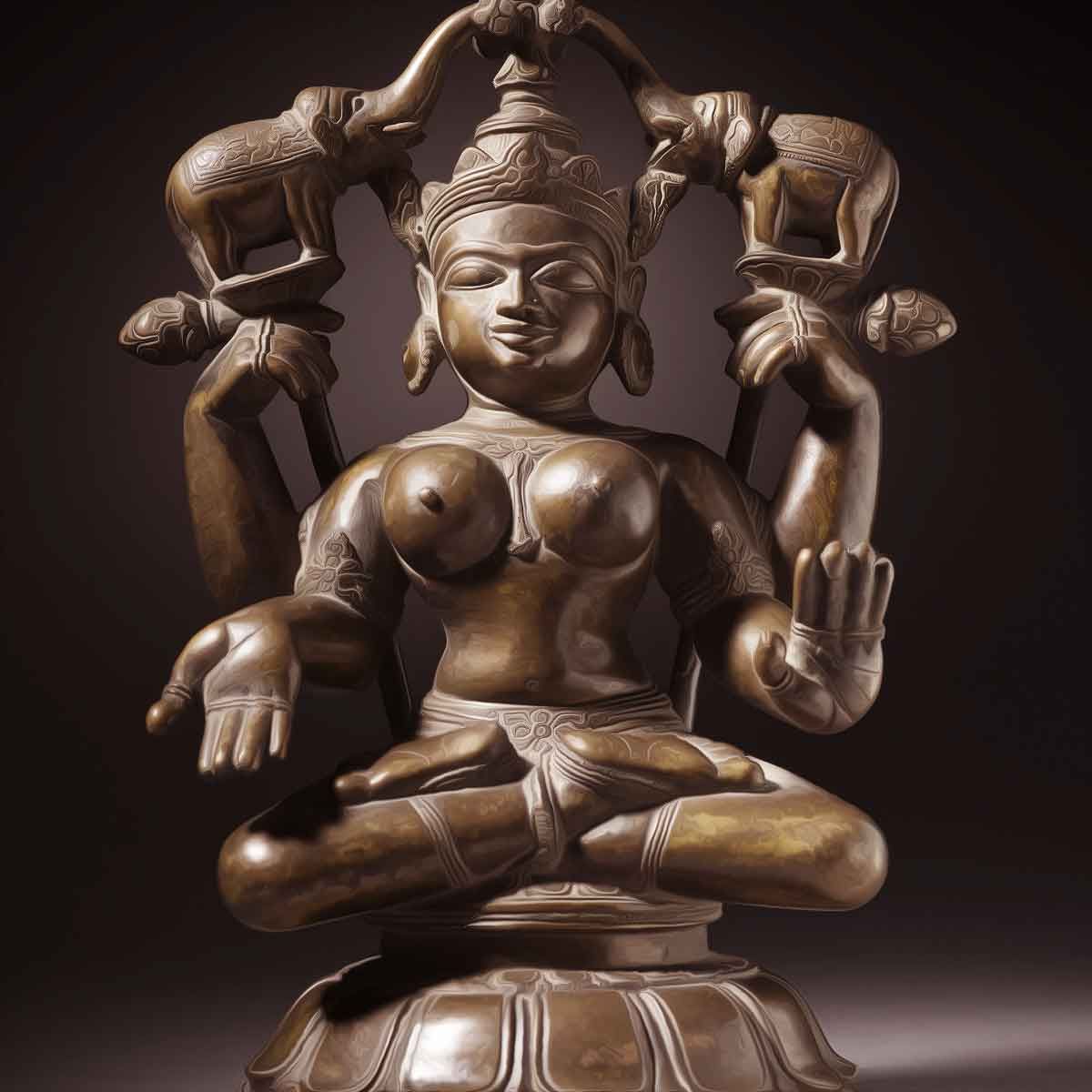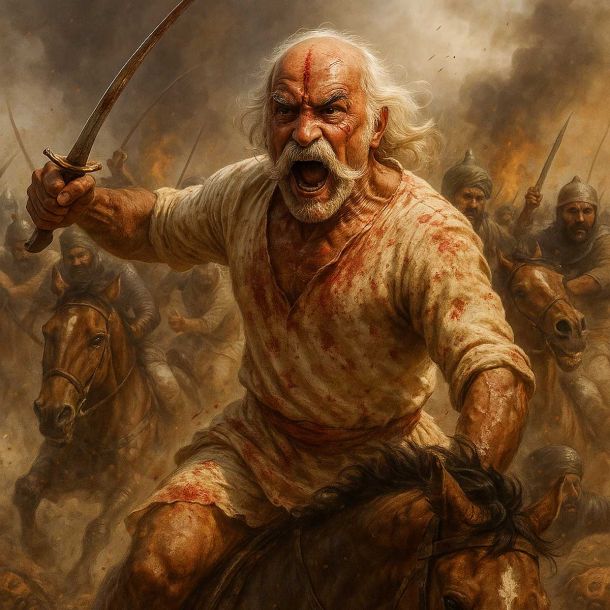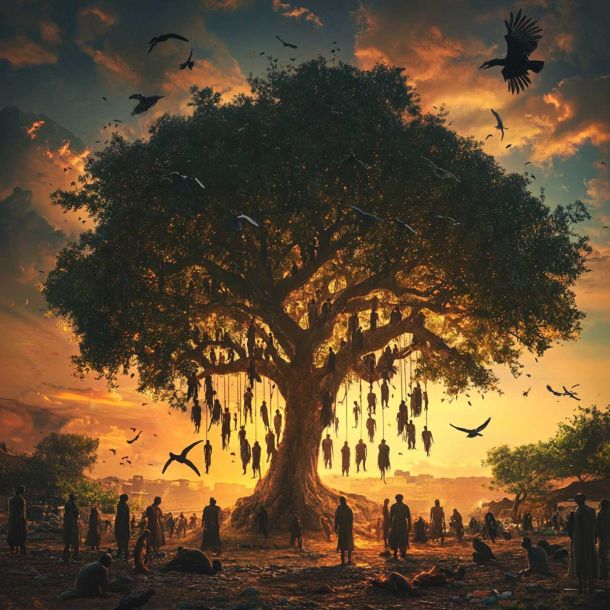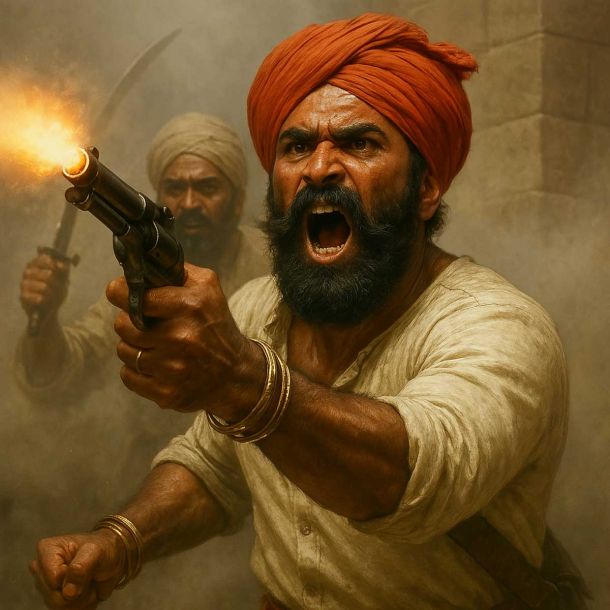MORE COVERAGE
"When heritage is stolen, a piece of history is lost forever": 16th c. Shri Lakshmi of Kerala lies as gift of Harry Lenart in Los Angeles County Museum of Art, a melancholy note that such priceless treasures of Indian heritage rest in foreign land

This outstanding sculpture, crafted from a copper alloy known as bronze, originates from the contemporary Indian region of Kerala and is an exquisite representation of the Hindu goddess Shri Lakshmi. Shri Lakshmi, as per Hindu tradition, is the divine consort of the god Vishnu. In this extraordinary work of art, the goddess with two arms can be seen standing on a pedestal shaped like a lotus, with a nimbus surrounding her that reaches up to the level of her shoulders.
The nimbus, a kind of aureole or halo in religious art, is created with great intricacy in the shape of a pipal leaf or a heart, lending a divine aura to the depiction of the goddess. Adorned with a tall crown that ends in a lotus bud, Shri Lakshmi's hair has been illustrated in a splendid manner as it cascades down in a splendid splay, embellished with floral endings.
Dressed in a striped skirt, which falls down in pleated folds and is complemented with a billowing sash, the goddess radiates regal beauty. The ornate jewelry that bedecks her adds a touch of grandeur to the ensemble. The visage of the goddess is delicately etched with large, open eyes, carefully crafted eyelids and eyebrows, a sharp, aquiline nose, and a pointed chin. The slight smile playing on her closed lips and the devotional marking on her forehead further enhances the spiritual resonance of the sculpture.
In her right hand, Shri Lakshmi can be seen holding an attribute with a lotus bud, an essential aspect of her iconography. A distinctive aspect of the sculpture is that it was originally part of a triad, most likely with Vishnu and another one of his consorts. This theory is supported by several iconographic indications. For instance, the slight tilt of Shri Lakshmi's head and her vertical axis suggests she is oriented towards a central figure that's missing, possibly Vishnu.
Her gaze is also directed to the left, presumably where Vishnu was intended to be placed. An empty socket at the back of the sculpture further hints at a separately cast halo, or 'prabhamandala', that would have served to unify the trio of images.
A unique characteristic of the art from Kerala, as suggested by Mary Beth Coffman Heston in her study published in the Archives of Asian Art (2004), is the sculpted and painted figures' posture. It appears as a hyperextension of the lower back and prominently forward-thrust breasts, mirroring the distinctive physique of performers in the traditional Kathakali dance of Kerala.
|
Let's dig deeper into the details of this masterpiece. The sculpture dates back to the 16th century, from the region of Kerala in India. It is composed of copper alloy, a durable material which has allowed it to stand the test of time. The dimensions of this figurine measure approximately 14 x 4 5/8 x 3 inches, or 35.56 x 11.75 x 7.62 cm, a testament to the precision and skill of the artisans who crafted it.
This enchanting piece was generously donated by Mrs. Harry Lenart to honor the 40th anniversary of the museum. The donation was cataloged as M.2005.73 under the category of South and Southeast Asian Art. However, it's noteworthy to mention that, as of now, this fascinating testament to India's rich cultural and spiritual heritage is not currently on public display.
It brings a melancholy note to our hearts when such priceless treasures of Indian heritage are not found in their native land, but instead, they rest in foreign territories.
These stunning sculptures hold within them centuries of devotion, mythology, and human creativity. It is indeed a matter of sorrow that they are distant from the land that inspired their creation, thus depriving the native people of the opportunity to behold and marvel at these embodiments of their shared heritage.
Each sculpture has a story to tell, a wisdom to share, and it would be more fitting if they were able to do so on their own soil. It's our earnest hope that one day, they will find their way back home, to the sacred land that gave them life.
|
Shri Lakshmi Lustrated by Elephants
This captivating sculpture, named "Shri Lakshmi Lustrated by Elephants" or more commonly known as "Gaja-Lakshmi", hails from the Indian state of Odisha, also known as Orissa. Dating back to the 18th century, this exemplary piece of art is crafted from brass, a material highly revered in traditional Indian sculpting.
The sculpture measures about 9 1/4 x 5 1/2 x 5 1/4 inches, or in metric terms, approximately 23.5 x 13.97 x 13.34 cm. Despite the moderate size, the level of detail and craftsmanship presented in this work is profound. This brass masterpiece of Indian art was purchased through the Indian Art Special Purpose Fund, with the museum catalog number M.74.40.1. It belongs to the South and Southeast Asian Art collection, although it is not currently on public display.
The title of the sculpture, "Gaja-Lakshmi", is of great significance in the Hindu religion. The term 'Gaja' translates to 'elephant' in English, thus this portrayal of the Goddess Lakshmi represents her in one of her most popular forms, where she is shown being lustrated, or ceremoniously bathed, by elephants. This portrayal is emblematic of abundance, prosperity, and good luck, qualities often associated with Goddess Lakshmi.
Now, let's delve deeper into the relevance of this sculpture by exploring the rich bibliography associated with it. This particular piece has been mentioned in several important publications, underscoring its cultural and artistic significance.
The first such reference is in "El Universo de la India: Obras Maestras del Museo de Arte del Condado de Los Angeles", a Spanish language publication. Published in Santiago by the Centro Cultural Palacio La Moneda in 2012, it features masterpieces of Indian Art from the Los Angeles County Museum of Art, highlighting this particular sculpture of Gaja-Lakshmi.
Another significant publication is "In Her Image: The Great Goddess in Indian Asia and the Madonna in Christian Culture" by Gerald Larson and others. This book, published in Santa Barbara by the UCSB Art Museum, University of California in 1980, draws parallels between the portrayal of the Great Goddess in Indian Asia and the Madonna in Christian Culture, further amplifying the cultural importance of this artwork.
The sculpture is also featured in "Elephants and Ivories in South Asia" by Pratapaditya Pal. Published in 1981 by the Los Angeles County Museum of Art, this book underscores the significance of elephants in South Asian culture and art, thus making our sculpture an important piece of this narrative.
Lastly, "Indian Sculpture, vol.2" by Pratapaditya Pal, published jointly by the Los Angeles County Museum of Art and the University of California Press in 1988, gives a comprehensive overview of the history of Indian sculpture. Within its pages, the sculpture of Gaja-Lakshmi holds a special place, signifying its contribution to the rich tapestry of Indian sculptural tradition.
The Gaja-Lakshmi sculpture encapsulates the spirit of devotion and spiritualism inherent in Indian art. Despite its physical absence from public view, its ethereal presence is palpable, a testimony to the enduring appeal of the divine. It serves as a remarkable conduit, connecting us with an era and culture replete with spiritual significance and artistic brilliance. As we contemplate its existence, we are transported to a realm where the divine and human intertwine, where art meets spirituality, and where each figure, each stroke, narrates a tale of devotion, faith, and divine intervention.
|
Shri Lakshmi Lustrated by Elephants (Gaja-Lakshmi) and Flanked by Sarasvati and Ganesha
This exquisite work of art named "Shri Lakshmi Lustrated by Elephants (Gaja-Lakshmi) and Flanked by Sarasvati and Ganesha" was created by Puna Devi, a notable Indian artist active in the 1970s. Hailing from the region of Bihar, specifically Mithila, the artwork was completed on February 15, 1979. Puna Devi's creation belongs to the category of drawings and watercolors, showcasing the profound beauty and cultural richness of Indian artistry.
This beautiful painting, using opaque watercolor on paper, is fairly large with dimensions of 29 7/8 x 22 3/4 inches, or 75.88 x 57.79 cm in metric units. Despite its physical size, its cultural and spiritual significance far exceeds its physical dimensions. The artwork was generously gifted to the South and Southeast Asian Art collection by Stephen Markel, in honor of Doris E. Bryant, under the museum number M.2000.165.2. Although currently not on public view, its influence resonates deeply with those who have had the privilege to witness it.
To delve deeper into the cultural underpinnings of this artwork, we must understand the origins and context of the Madhubani or Mithila style of painting. This unique form of art finds its roots in northern Bihar, more specifically in the village of Mithila located in the Madhubani District. This connection to the village is what gave the art form its contemporary names.
Traditionally, these paintings were characterized by their bold black outlines and vibrant color combinations. They were primarily created on freshly plastered mud walls and floors of huts. This was a communal activity, largely undertaken by the women of the village. The imagery in these paintings is closely related to nature and fertility, and these images are strongly tied to ritualistic events and significant occasions.
These paintings adorned the walls of family shrines, and exterior walls of homes were embellished with them for weddings and other festivals. For instance, during marriage celebrations, the bridal chamber, known as the 'kohbar ghar', was lavishly decorated with symbolic and auspicious images.
In 1966, Mithila faced a severe drought and famine which left the region impoverished. To provide a source of income to the affected population, government aid workers encouraged the artists to transition their art from the walls of their homes to paper, which could be sold to tourists. As a result, paper-based Mithila art started to flourish, depicting magical and ritual symbols, scenes from mythology, popular dramas, folk stories, and depictions of Hindu deities.
In this specific artwork by Puna Devi, the central figure is Shri Lakshmi, the Hindu goddess of wealth and beauty, who is being ceremoniously bathed by elephants in a form known as Gaja-Lakshmi. To the right of Lakshmi, we see Sarasvati, the goddess of knowledge, learning, speech, poetry, and music. On Lakshmi's left, there is Ganesha, the elephant-headed deity known as the remover of obstacles. Each figure contributes to the rich tapestry of meanings and messages embedded in the painting, reflecting the profound spirituality and devotion inherent in Indian art and culture.
 Support Us
Support Us
Satyagraha was born from the heart of our land, with an undying aim to unveil the true essence of Bharat. It seeks to illuminate the hidden tales of our valiant freedom fighters and the rich chronicles that haven't yet sung their complete melody in the mainstream.
While platforms like NDTV and 'The Wire' effortlessly garner funds under the banner of safeguarding democracy, we at Satyagraha walk a different path. Our strength and resonance come from you. In this journey to weave a stronger Bharat, every little contribution amplifies our voice. Let's come together, contribute as you can, and champion the true spirit of our nation.
 |  |  |
| ICICI Bank of Satyaagrah | Razorpay Bank of Satyaagrah | PayPal Bank of Satyaagrah - For International Payments |
If all above doesn't work, then try the LINK below:
Please share the article on other platforms
DISCLAIMER: The author is solely responsible for the views expressed in this article. The author carries the responsibility for citing and/or licensing of images utilized within the text. The website also frequently uses non-commercial images for representational purposes only in line with the article. We are not responsible for the authenticity of such images. If some images have a copyright issue, we request the person/entity to contact us at This email address is being protected from spambots. You need JavaScript enabled to view it. and we will take the necessary actions to resolve the issue.
Related Articles
- Captivating world of Warli art - an ancient tribal tradition of the organic colors, rich cultural heritage, and mesmerizing techniques from Mumbai that have preserved this unique folk art through generations, the timeless beauty with soaring global appeal
- "Toys: Childhood's magic": In a spirited resurgence, the Central Government champions the 400-year-old legacy of Kondapalli toys, fostering a golden era where Aryakhastriyas artisans breathe life into vibrant, ethereal art with rejuvenated zest and unity
- "In every brushstroke, a story unfolds": Amadubi, a vibrant canvas where nature's colors meet tribal artistry, earthy hues tell tales of ages, and every handcrafted piece echoes generations of tradition, dive into this treasure to feel the pulse of Bharat
- "A foreign voice, an Indian heart": CassMae, a German vocalist, captivates India with her soulful renditions of Indian songs, earning praise from PM Modi, this musical prodigy, despite never visiting India, resonates deeply with Bharat's melodic heritage
- "Purpose of art is washing the dust of daily life off our souls": Uttarakhand - Ramnagar is renowned for vibrant and captivating wall art and does come alive with colorful and intricate paintings, creating visually stunning experience for all who visit
- "Every relic of the past is a link to the echoes of history": Unearthing a 2,300-year-old elephant statue in Odisha's Puri, opens a time portal to Emperor Ashoka's era, illuminating the influence of Buddhism and its profound symbolism in ancient India
- An Artisan Heritage Crafts Village: Indigenous Sustainability of Raghurajpur
- PM Narendra Modi inaugurated the Statue of Equality of Sri Ramanujacharya and emphasized 'Progressiveness does not mean detaching from one’s roots and that there is no conflict between progressiveness and antiquity.'
- A new symbol of Hindutva pride, Shri Kashi Vishwanath Temple Corridor
- "हो, मुहंजो खट्टी आयो खेर सां हो जमालो" | Dive into the tale of 'Hojamalo', a Sindhi folk song born from bravery that celebrates Jamalo Sheedi's fearless act on the Lansdowne Bridge, blending history with melody in a tribute to courage & cultural heritage
- “In the struggle between stone & water, in time, the water wins”: Bharatiya Martial Art | Kalaripayattu is the father of all martial arts in the world, the existence of Martial arts in India for over 3000 years can be proved by its mention in the Vedas
- PM to unveil the 'Statue of Equality' of 11th century Vaishnavite saint Ramanujacharya: World’s second-largest statue in sitting position in Hyderabad on the 40-acre sprawling premises
- 5 lakh kg of temple jewellery has been melted so far, DMK government planning to melt even more
- “The bigmouths never visited Lord Ram’s birthplace and kept on playing politics”: Ram Mandir chief priest says only BJP cares about Ram Mandir, Modi did Shilanyas and CM Yogi visited 40 times
- Biggest Wonder of the World : Kitchen of Lord Shri Jagannath












